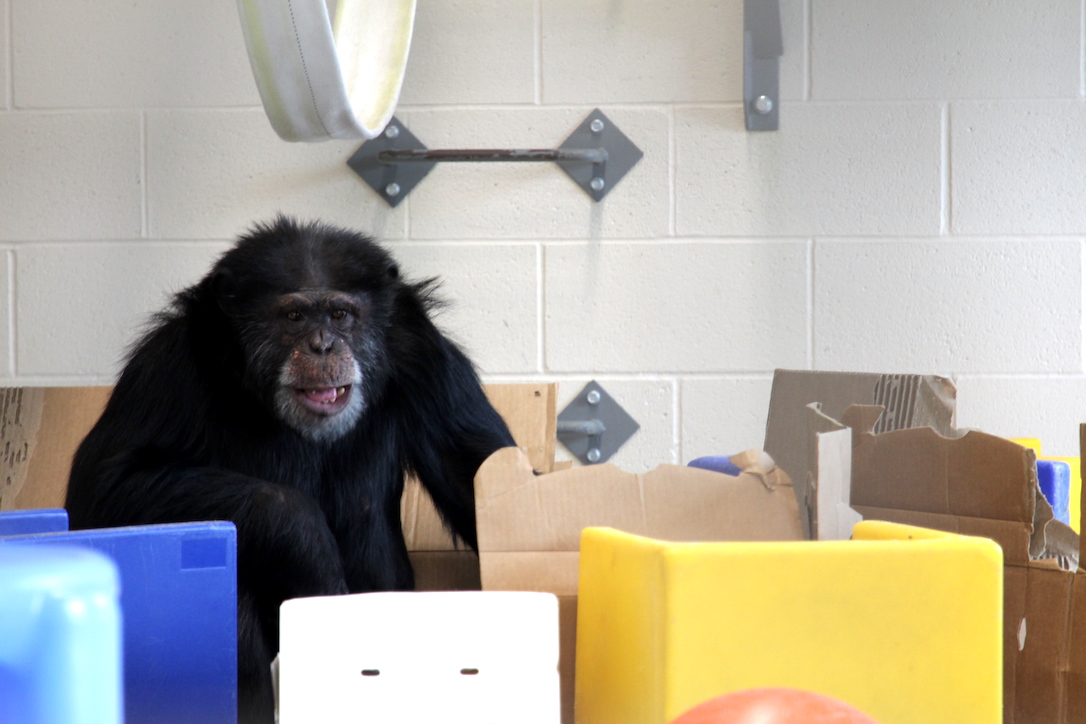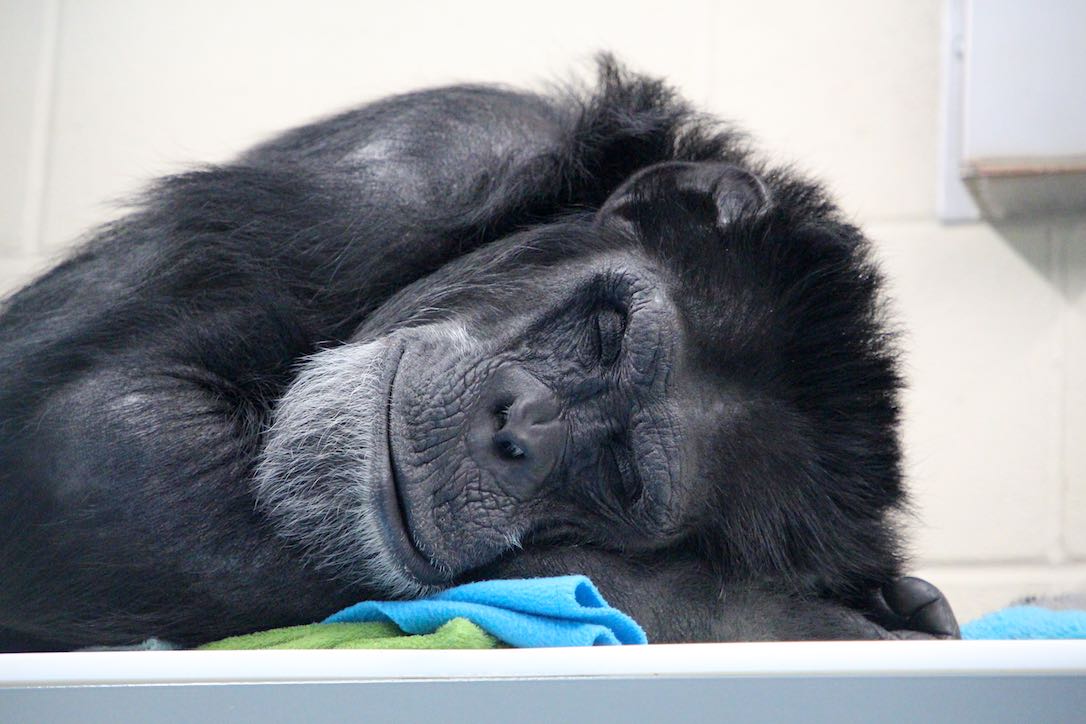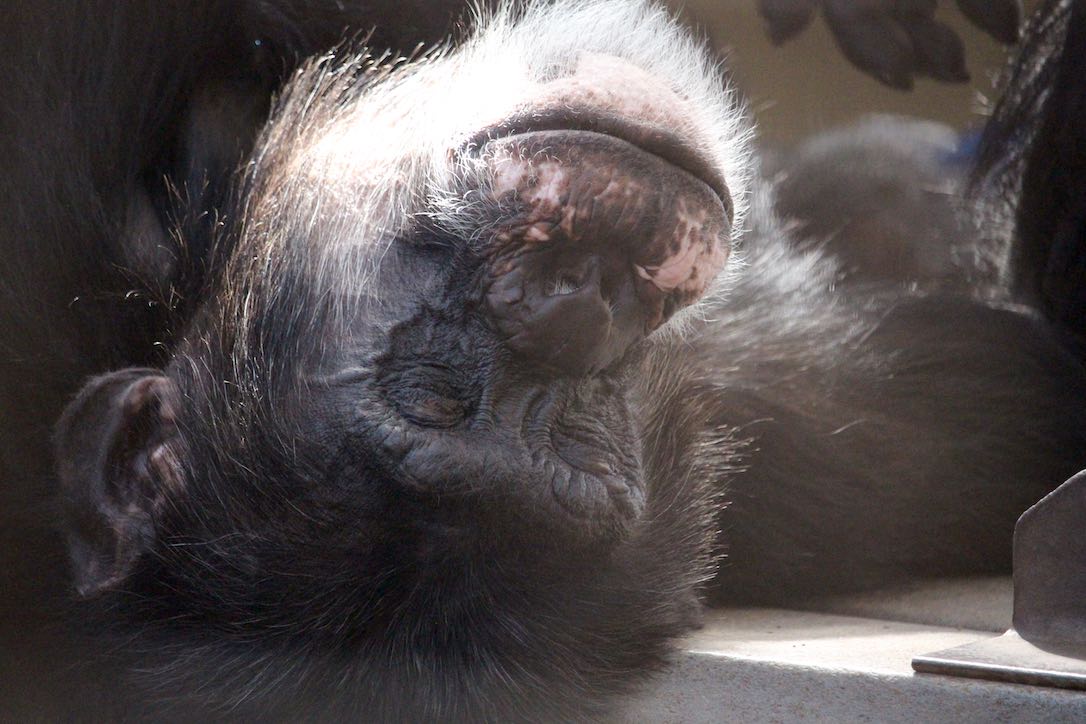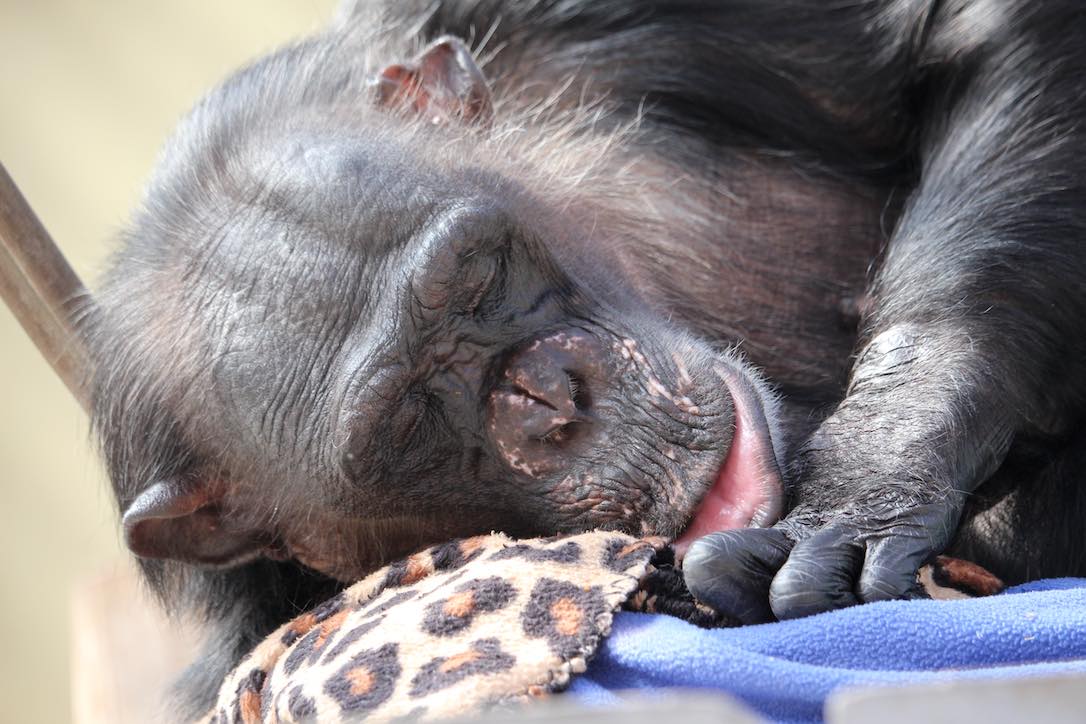The chimpanzees began their morning with a raucous exchange of displays between the two neighboring groups. Screams, barks, drumming and hoots reverberated throughout the Chimp House. The neighbor effect is very real.
The following breakfast services were predictably tense. On one side of the building, Jamie was irate that the poor human caregiver wouldn’t give her someone else’s chow bag. The white paper bag sat awkwardly in the bottom of the food chute as Jamie loudly won the ensuing argument, but Negra quietly absconded with the prize during the chaos. In the Mezzanine, Willy B flexed his dominance by intimidating the female chimps and claiming Mave’s chow bags. Willy has grown more patient and tolerant in his time here, possibly due to our efforts to promote cooperative feeding. However, like all high-ranking chimps, he still needs to assert himself occasionally. This morning was one of those moments.
Generally speaking, chimpanzee behavior is characterized by short chaotic episodes during which the social hierarchy is challenged. These conflicts can either reform existing relationship dynamics or reinforce them. Instability and tension, however, are not just unpleasant; they’re downright exhausting. Adrenaline is unsustainable and requires a long reset afterwards. For this and many other reasons, chimps spend most of their time engaged in relatively peaceful activities such as grooming, foraging, and rest. I don’t know if chimpanzees have a “love language,” but low-key quality time would probably be it.
Given today’s hectic beginning, it was not surprising that the sanctuary’s residents had calmed down by lunch. The Seven were all about doing laps around Young’s Hill, while Honey B and Mave spent a large chunk of the day grooming and playing chase. Once our team was finished scrubbing enclosures for the day, I took a moment to go sit just outside the caging in the Mezzanine and observe the chimps. Willy B was the only chimp up there, lazily turning over some blankets and toys that had just been distributed by caregivers.
Willy B stared at me for a second, made a gentle hoo, and retrieved a fluffy blue blanket that had been draped over the nearby bench. He dragged it towards me with his knuckles, stopping only when the edges of the blanket were pushed up against the bottom of the steel mesh that separated us. Willy then leaned forward and, like a collapsing Imperial AT-AT, took a gargantuan nose dive into the shaggy pile.
He laid there for some time, face buried in the folds of the blanket. It was difficult to tell if it was a moment of pure exhaustion or zen-like bliss. I followed suit, sprawling out on the smooth heated floor. He lifted his head to reveal his brown eyes, which briefly showed a flash of skepticism, before apparently deciding that it was okay for me to join him on the floor. As I laid on my back, looking up at the passing clouds through the Mezzanine’s skylights, Willy began to take longer and longer blinks until he slowly fell asleep.
Even though I’m used to the routine by now, I noted how odd it felt to see Willy B gradually drift off into a light nap. He seemed to be at ease amid his surroundings despite being a hurricane of hair and muscle just hours earlier. I also felt slightly honored that he had chosen to be in my proximity without asking for anything else. I reminded myself that the never-ending waves of chimpanzee emotion, with peaks of chaos and troughs of serenity, are not something to be necessarily battled against. Rather, they are all part of the chimpanzee experience, adding value to each other. As Anna once told me when I was learning to manage the complex dynamics among these unique chimp individuals, “you’ve gotta ride the waves.”
I decided not to take any photos of Willy B’s nap; doing so would have likely caused him to sit up and stare into the camera lens. Instead, here are some photos our team has taken of chimpanzees resting during the peaceful eyes that separate many tumultuous storms.
Have a great night, everyone!






















